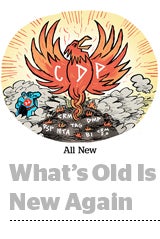 Oracle launched a prospecting and lead-scoring product called Fusion Marketing on Monday, as the company tries to reframe the value of the CRM in a world gone crazy for the CDP.
Oracle launched a prospecting and lead-scoring product called Fusion Marketing on Monday, as the company tries to reframe the value of the CRM in a world gone crazy for the CDP.
Fusion is the first in a series of what Oracle is calling “Engineered Experiences,” its term for automating workflow processes across different business orgs (or Oracle cloud product suites), such as services, customer experience, human resources, commerce and advertising, said Holly Simmons, global VP of product management for Oracle Marketing, Commerce and Unity, its CDP tech.
Simmons’ own job title shows how Oracle is focused on integrating its various cloud services, often with the CDP product as connective tissue.
The Fusion product addresses a specific B2B marketing use case, since B2B companies must navigate a disconnect between the pace of marketing and sales campaigns, Simmons said.
Marketing campaigns take time to plan and collect data. They may be optimized mid-flight, but that would be shifting budgets toward the media that performs best. Audiences aren’t immediately filtered into the sales funnel, Simmons said.
Sales is a faster-paced campaign environment. People who recently read a certain white paper might test a subscription software product. Account managers direct potential targets to an upcoming event or webinar. In the world of B2B sales, target audiences either move down the sales funnel and convert within a relatively short window, or they fade off.
“You need a much more rapid cadence to do that outreach and keep the pipeline moving,” Simmons said.
Oracle Fusion addresses this issue by ingesting advertising audiences and the client’s first-party data across its cloud products to create live lead-scoring filters that identify potential sales targets based on the data and place those individuals in the sales funnel.
Not all Oracle customers use the Unity CDP, Simmons said. But the Fusion product relies on the CDP to make scoring judgments.
For instance, if someone was targeted on a B2B news site, and the Unity CDP matched the advertising identity to a customer who recently reached out to Services about an account, it might trigger a “nurturing” email about upgrades or getting value out of the product. An email promotion might also be personalized with a particular customer success story, if the salesperson knows precisely what that software buyer is looking for.
The CRM is still a source of real value to B2B marketers and businesses, she said. CDPs have been the craze for the past couple of years, especially during the pandemic when many businesses invested in digital transformations. But without conferences, meetings and other events, she said, lead generation has gotten stale for sales teams. And not every company needs a CDP if they don’t collect behavioral data or much first-party data at all.
But they still need to refresh their lead-gen pipeline.
The value of a CRM and CDP can seem fairly mundane at times. Often, the use case is a slightly smarter, automated email trigger. Hardly rocket science.
But most companies still don’t sync their assorted cloud suites and enterprise services, Simmons said. Oracle Fusion must also integrate cloud platforms like Salesforce and Windows, because businesses use multiple competitive services at times. Or even if they do use a combination of Oracle products, she said, they often don’t automatically connect B2B tech like Eloqua, Oracle’s marketing automation software business, to the teams writing and publishing content, account managers or customer service, where important prospecting data still exists.
“The intent is to take the challenge out of leveraging different applications and provide something that’s easy to use on top of applications that they already have,” she said.
















